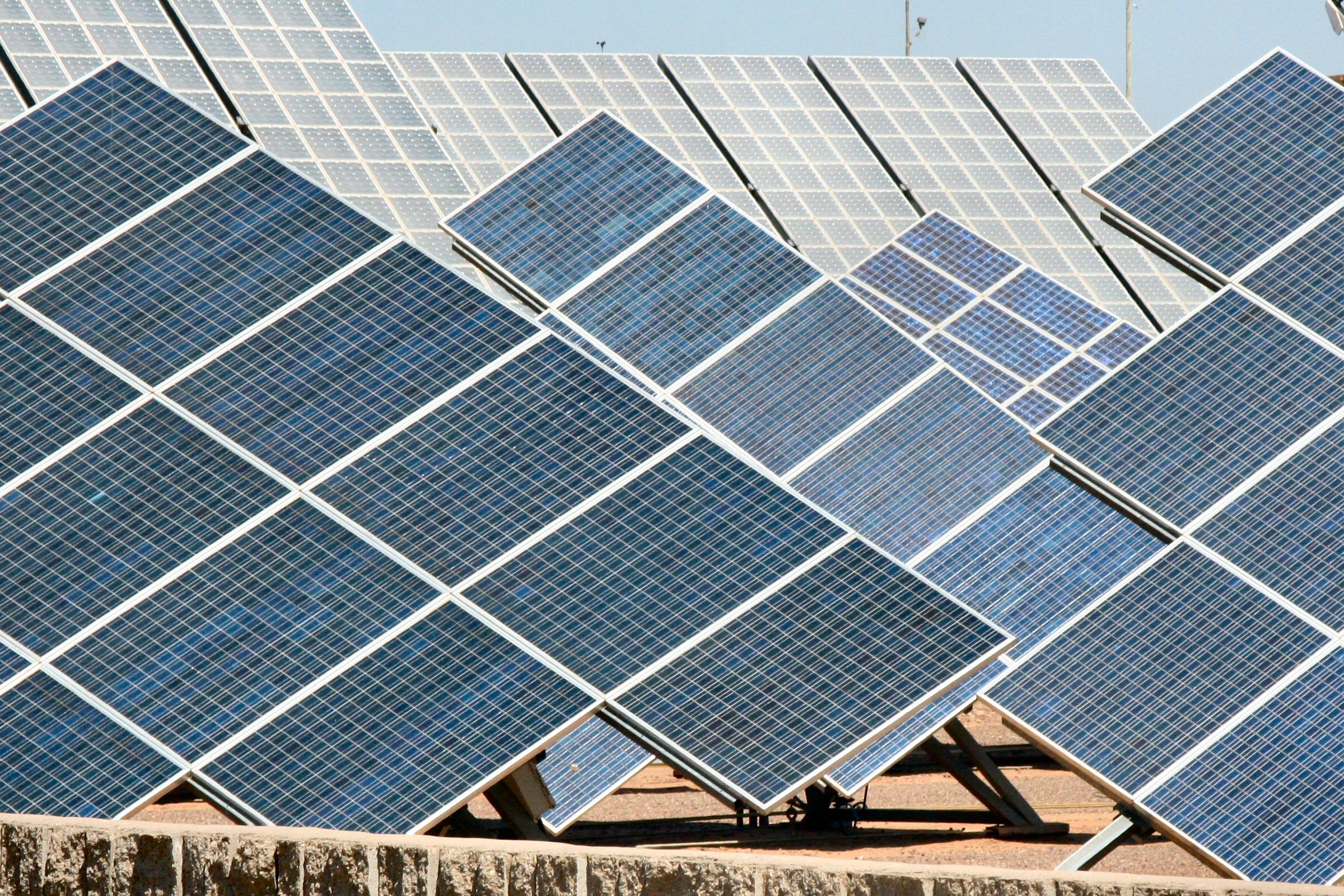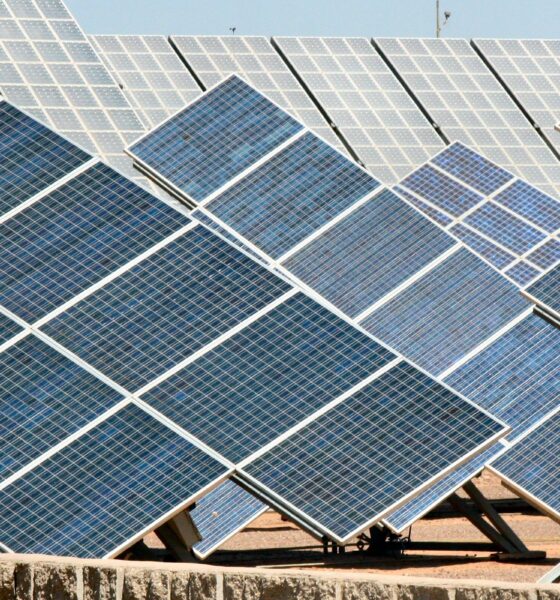

Features
Solar power: making money or just changing the world?
In 2010 the BBC ran a radio series called A History of the World in 100 Objects. Based on exhibits from the British Museum, the series stretched from pre-historic artefacts to a Russian revolutionary plate. Object 100 though was chosen to represent the future. Neil MacGregor the British art historian and Director of the British Museum decided that this object should be a solar powered lamp representing human ingenuity and the challenges that we face in the twenty-first century.
This article was originally published on specialist investor WHEB’s blog.
In many ways this was a brave choice. 2010 was not an auspicious year for solar companies. Still reeling from financial crisis, many solar companies saw steep declines in their share prices. First Solar, for example, the largest solar business at the time, had just seen its share price halve to US$150 over the preceding twelve months and many countries were already discussing ways to cut back on generous renewables subsidies.
Darkest before the dawn
Early investors into these areas, optimistic about the role that renewables could play in tackling climate change made and then lost huge amounts of money. Low carbon and renewables-themed funds had gone in to ‘purdah’ or rebranded themselves as ‘resource efficiency’ funds and the widely anticipated climate negotiations in Copenhagen at the end of 2009 ended in acrimonious failure. Meanwhile fossil fuel investors were full of optimism. The oil price had rallied to over US$110 a barrel and the financier Nat Rothschild was able to raise over $1bn in a matter of days to invest in Indonesian thermal coal production.
But behind these bleak headlines, the renewables industry was still booming. Overcapacity in solar panel production was clearly making life very difficult for the panel manufacturers themselves by driving down the average selling price (ASP) of the panels. Some of the companies with the more esoteric technologies have gone bust and the brutal cost declines have forced consolidation of the remaining players. However these declines in ASPs have also meant that the costs of generating solar electricity were also collapsing. In 2010 solar cost approximately US$1.80/Watt, but less than two years later the cost was just US$0.80 costs are now under US$0.60/Watt).
Value shifting to solar developers
The panel manufacturers’ pain translated into great gain for those businesses operating further downstream the solar value-chain with explosive growth in the volume of solar installed. In fact, no reputable industry forecast has ever over-estimated global growth in the deployment of solar panels. The International Energy Agency’s 2000-2007 forecasts saw cumulative capacity in 2010 of 10 gigawatts (GW). In fact, cumulative demand in 2010 was four times this at 40GW, and just four years later the world installed 40GW. This year the world is expected to install 56GW.
And there is no sign that this rate of installation is slowing down. Solar is emerging as the key energy technology of the future, achieving a 14% compound annual growth rate (CAGR) from 2010-2020. So-called ‘grid parity’ – the point at which a unit of electricity from solar is equivalent to the cost of a unit of electricity purchased off the grid – has already been achieved in 32 countries around the world including in parts of the US and China as well as several countries in Europe and fast growing parts of Latin America such as Chile. In 2011 there were only three multi-GW markets; China, Italy and Germany. By 2020 there will be 14 covering the developed world (Australia, France, Germany, Italy, Japan, US and UK) and fast growing emerging markets such as Chile, China, India, Saudi Arabia, South Africa and even Thailand. Solar represented 15% of new global generation capacity installed in 2014. It is forecast to be 40% in just 10 years. Renewables as a whole are expected to draw $8 trillion in investments through to 2040, almost double the $4.1 trillion that will be spent on coal, natural gas and nuclear plants.
Swimming downstream
This rapid shift in the value-chain has meant that virtually all the module manufacturers have added project development businesses to their portfolio to capture the value from lower module prices and soaring installation rates. Several have also created separately listed businesses (so-called ‘YieldCo’s’) that are able to purchase solar projects at attractive rates and enable the developers to recycle capital into new projects.
At the same time, risks that government policy might change have become much less acute. As solar power prices have declined, so has the level of subsidies and so making the industry less vulnerable to cost-cutting. The industry already claims several GWs of unsubsidised solar development is taking place in markets as varied as Chile and China. At this point, the net effect of more solar on the electricity grid may well be to reduce overall power prices. Many more markets are also now installing solar power and by diversifying the end-market, this also further mitigates policy risk to the industry.
But can you make money?
So the sector is growing very quickly, the technology is maturing and becoming cost competitive, political risk is receding and companies are adapting their business models to maximise value. But… can you make money investing in the sector? We believe that you can, but you need to choose your exposure very carefully.
As these trends continue, in our view, value will continue to migrate downstream to the development and ownership of the solar assets. Businesses focused on upstream and even midstream activity such as polysilicon and inverter manufacturing remain vulnerable to price pressure and in the latter case rapidly evolving technology. Several businesses in the sector are also still heavily indebted, for example, Yingli Green Energy Holdings had 11x net debt to EBITDA in 2014 with Renesola on 7x. Several are also yet to make profits including high profile companies such as SunEdison and SolarCity.
But there are companies that are profitable, that are exposed to downstream project development and have project pipelines that are diversified by geography and end markets. Companies like Canadian Solar and Sun Power in particular perform well on these criteria, are both generating gross margins at or above 20% and are well-placed to grow their revenues and expand these margins further over the coming few years.
The five years that have elapsed since Neil MacGregor’s decision to make a solar powered light his object of the future have been tough for the solar industry. But in spite of this, his decision looks very astute. Investors have a great opportunity to benefit from the deployment of this revolutionary technology that will – and arguably already is – reshaping the economics of global energy.
Photo: Joe Zlomek via Freeimages
Further reading:


 Energy12 months ago
Energy12 months agoThe Role of Renewable Energy in Commercial Real Estate

 Environment8 months ago
Environment8 months agoAre Polymer Banknotes: an Eco-Friendly Trend or a Groundswell?

 Energy12 months ago
Energy12 months agoHow Energy Referral Programs are Saving The Planet… And Your Bank Account!

 Environment9 months ago
Environment9 months agoEco-Friendly Home Improvements: Top 7 Upgrades for 2025



















